Leitz TruSens Z-3500H Connected Smart Air Purifier Review
An effective purifier, but disappointing smart features
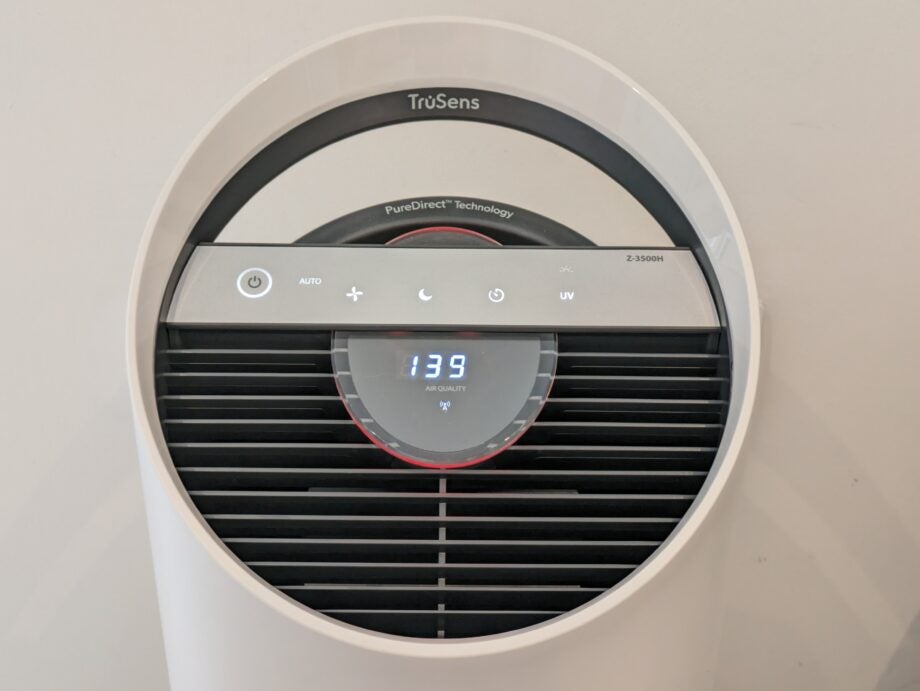
Verdict
The Leitz TruSens Z-3500H Connected Smart Air Purifier delivers effective air purification even in larger rooms. Its multi-stage filter scrubs pet hair, house dust and the majority of microscopic particles from the air, then it finishes off any microbes with a germicidal ultraviolet lamp. This is a well-specified purifier with a powerful yet efficient fan, app control, and a useful, separate air-quality monitor. However, the Leitz app is quite basic, and the Z-3500H’s network and sensor connectivity was problematic.
Pros
- High volume, high quality air purification
- Quiet and efficient
- PM1, PM2.5, PM10 and VOC air quality sensor
Cons
- Basic app
- Connectivity problems
Key Features
- Air quality sensorRemote sensor detects PM1, PM2.5, PM10 particulates and VOCs, telling the purifier when it needs to work harder
- Smart controlsLeitz’s app mirrors the physical controls, but it also provides more detailed air quality info, and enables scheduling
- Good, good, good, good filtrationA combined HEPA and carbon filter removes dust, particulates, pollen, mould spores and VOCs, while a UV light kills germs
Introduction
Leitz may be best known for office equipment, but its TruSens range of air purifiers is aimed at the home – alongside smaller commercial spaces such as shops and classrooms. There are three ‘dumb’ models for various room sizes, along with two smart versions that add app control.
I’m testing the Z-3500H, a slightly de-tuned version of the range-topping Z-3500. It’s designed to clean the air in rooms with a floor area of up to 60 square metres (m2) – that’s about the size of a large kitchen/diner. It has a clean air delivery rate (CADR) of 290 cubic metres per hour (m3/h) for smoke. The Z-3500 on the other hand is suitable for rooms up to 70m2 and has a CADR of 325m3/h.
The Leitz TruSens Z-3500H Connected Smart Air Purifier, to use its full name, is reasonably big, but it’s a smart device combining white and silver plastics with an eccentric, angled air output. It comes with a separate air quality sensor that connects wirelessly. According to Leitz, this gives a more accurate reading than you’d get from a sensor built into the purifier itself.
Design and features
- Attractive design with good controls
- Separate air quality monitor
- Basic app
This is a fairly large air purifier, noticeably taller than those designed for small rooms. It’s not much wider, though, and Leitz has done a great job of disguising its size with a tasteful and appealing design. The white plastic is enlivened by a silver mesh around the 360° air intake, while the air output has an unusual split design, broken up by a silver control bar.
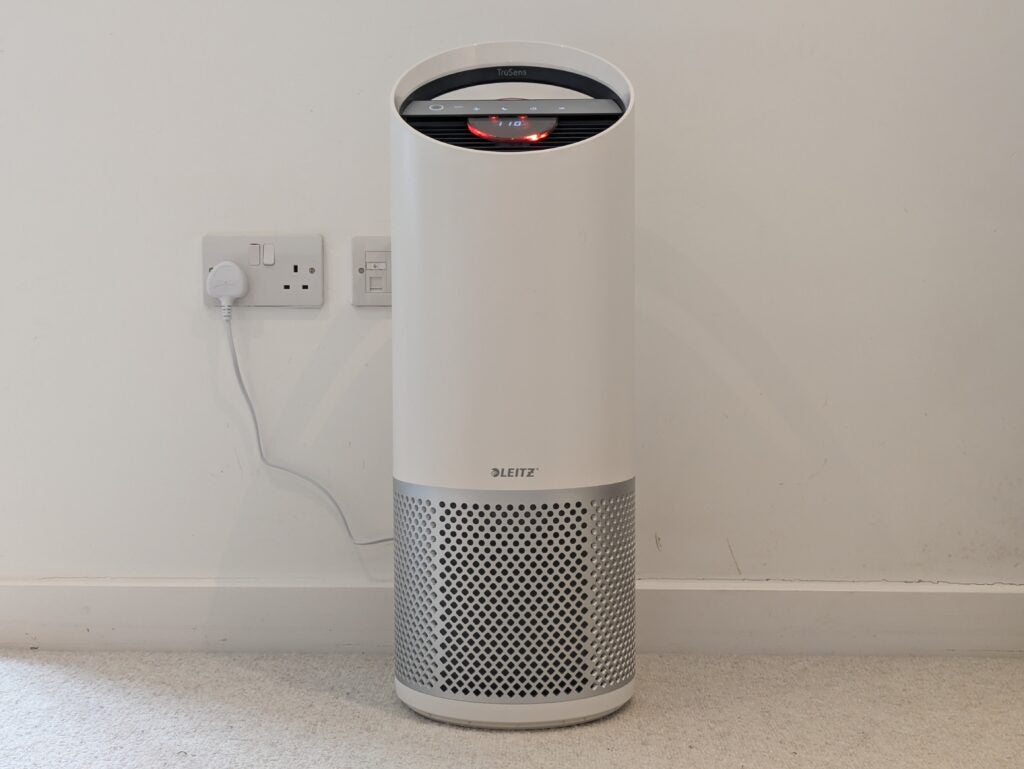
This bar offers control over the five fan speeds, and a timer for up to 12 hours in two-hour increments. You can also toggle the UV lamp or set the purifier into sleep mode, which extinguishes the touch-sensitive buttons but doesn’t change the selected fan speed. Just below the controls, there’s a numeric air quality display, with coloured lights indicating good (blue), moderate (orange) and bad (red) at a glance.
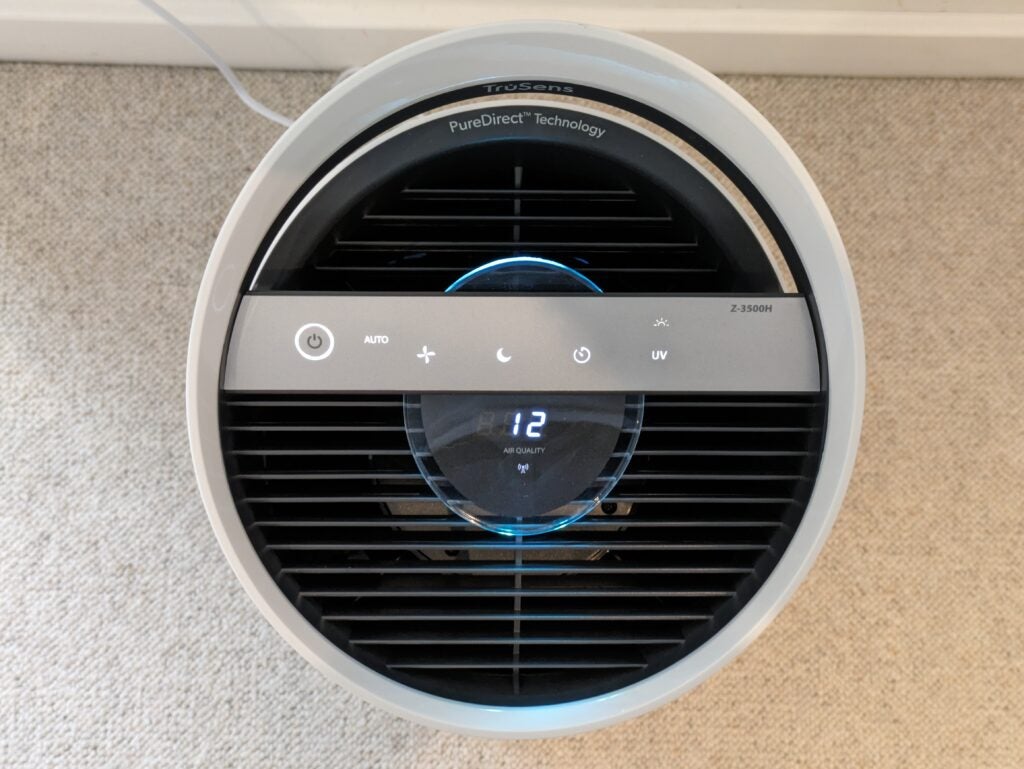
The Z-3500H gets air quality data from its separate wireless sensor. This sniffs out three sizes of particulates – PM1, PM2.5 and PM10 – which tend to be given off by vehicle exhausts, cooking and other sources of combustion. It also detects volatile organic compounds (VOCs), which are given off by some furnishings, paints, cleaning products, and also cooking. It beams the readings back to the purifier, which displays the highest one, and sets the fan speed accordingly.
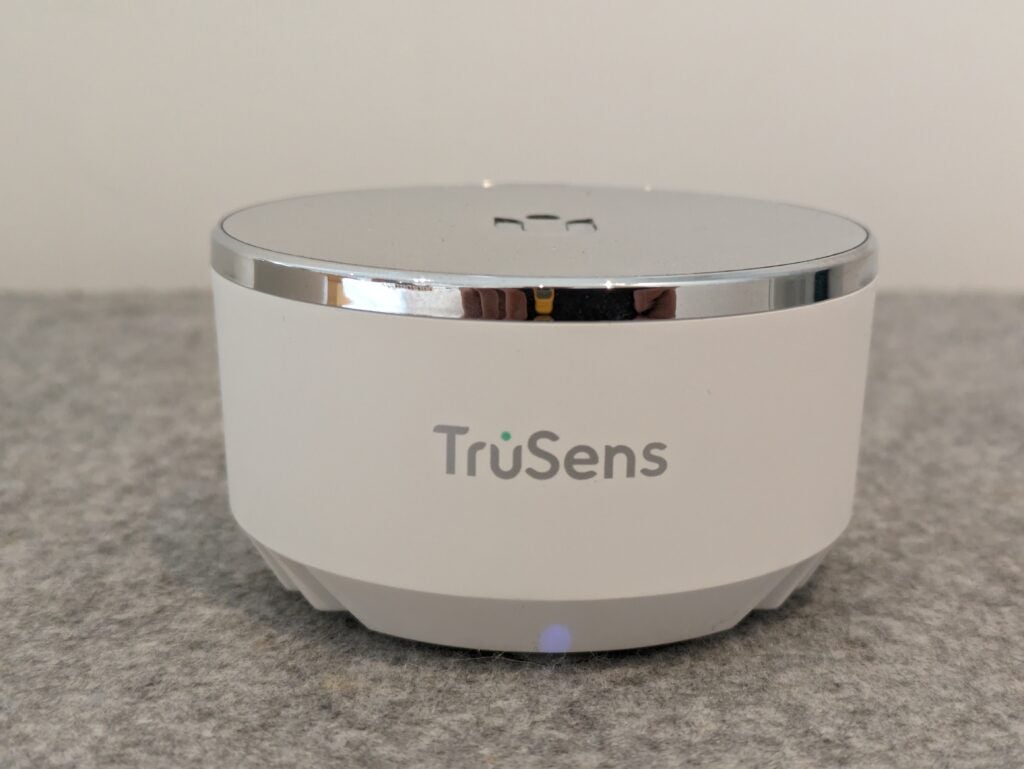
Leitz’s app mirrors the purifier’s physical controls and adds in relatively basic scheduling – you can only define a single schedule, which, for example, rules out setting the purifier to run for a couple of hours in the morning and then again in the evening. There’s no link up with Alexa or Google Assistant, so you can’t use voice control or build the Z-3500H into home automation scenarios.
The app does provide a useful air quality breakdown, showing a VOC reading, and PM1, PM2.5 and PM10 particulate levels in micrograms per cubic metre (μg/m3). It’ll also show you historical data by the hour, day, week and month, but this didn’t seem to work reliably – often there’d be no data visible for several days.
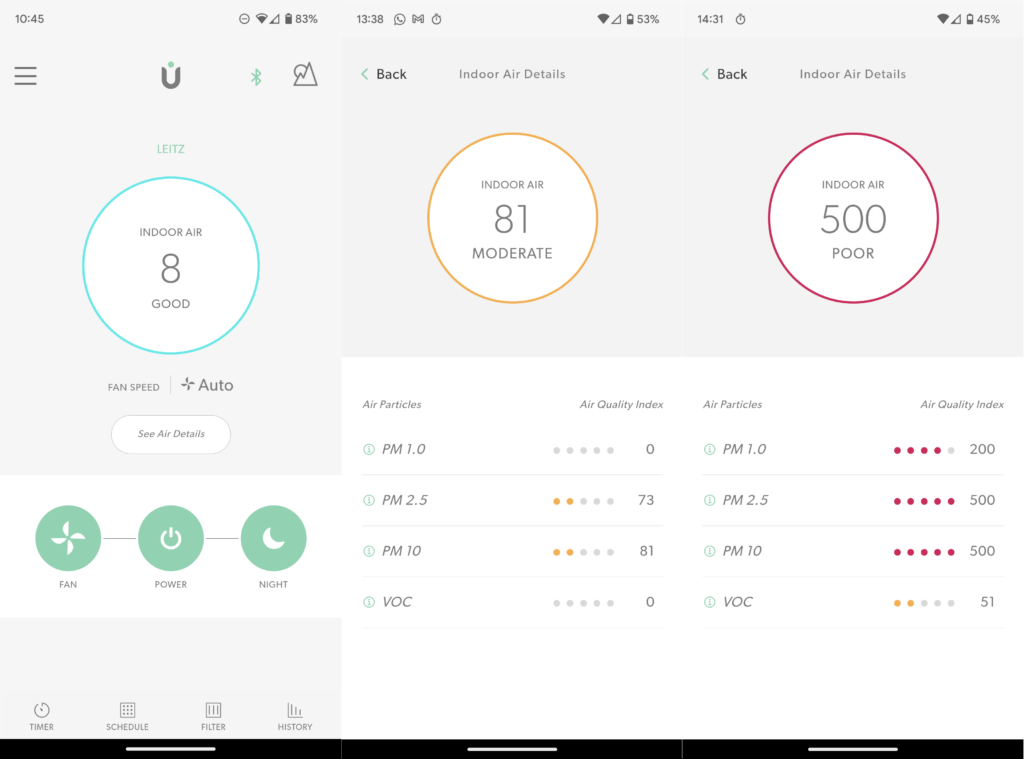
The final app feature is to show the status of the Z-3500H’s UV lamp and two filters. The HEPA 13 removes a claimed 99.97% of particles measuring 0.3 micrometres or more, which includes most bacteria, mould spores, allergens and heavier smoke particles.
The carbon filter neutralises VOCs and some other gases. You can buy a standard replacement, but there are also two alternatives specialised in odour or allergen removal – I did the bulk of my testing with the standard filter.
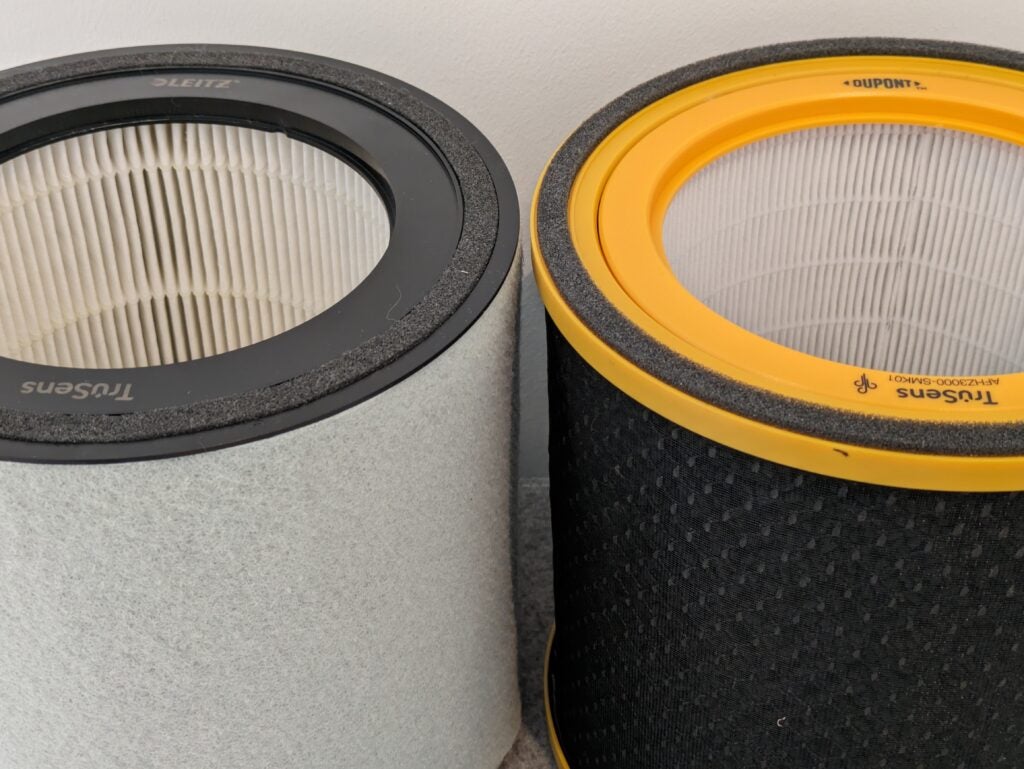
The UV lamp is contained within a guard that sits in the centre of the filter. Leitz says it will last for up to three years, and replacements are available for about £18. The standard HEPA filter should last for around a year or more, and costs just over £35 to replace. You’ll get through an additional three or four carbon filters in that time, but you can buy a three-pack of new carbon layers for £15.
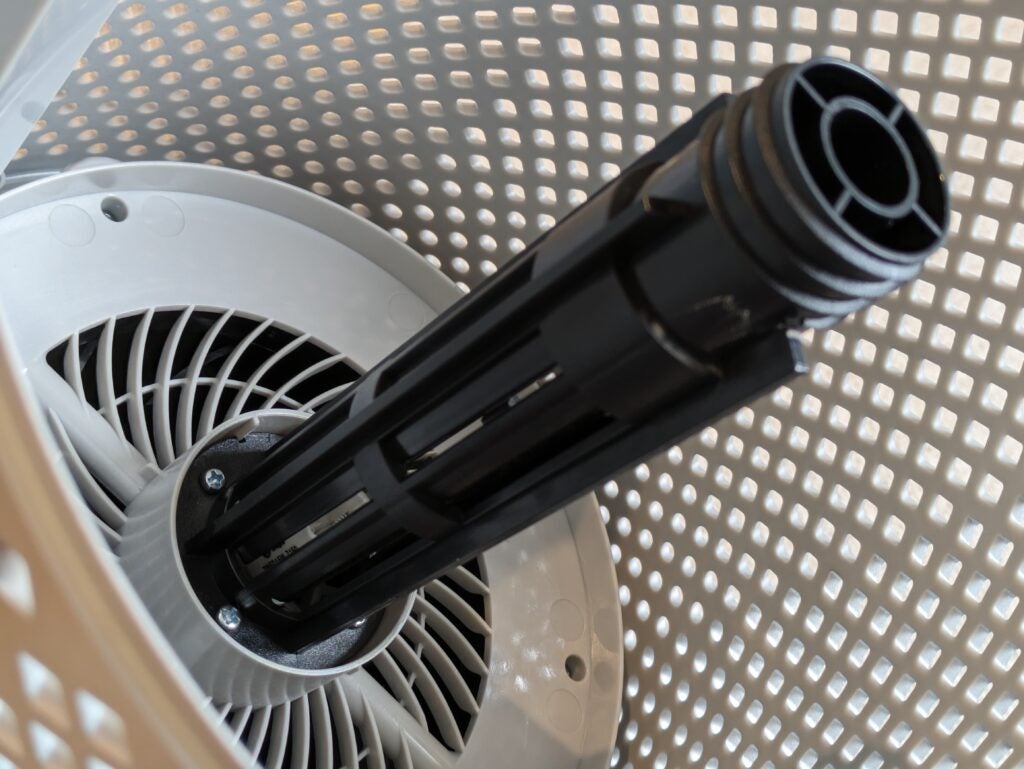
Performance
- Quiet and efficient
- Excellent filtration
- Unreliable connectivity
The Leitz’s separate sensor is a great idea, but I found its wireless range to be very disappointing. Even line-of-sight connections were sketchy from around five metres’ separation, while the signal seemed to be blocked if almost any furniture got in the way.
Unfortunately, it was a similar story with the purifier itself. Install the TruSens app and you can connect to the Z-3500H with Bluetooth, or join it to your network and use Wi-Fi. I found I needed to be within a few metres for Bluetooth to be fully reliable.
Wireless network connectivity was so poor as to be unusable, with the purifier repeatedly dropping its connection. I tried putting my router into its most basic mode, but even with a direct line of sight, Wi-Fi remained unreliable. I tried to apply the available firmware update, but repeatedly got a ‘Download failed’ message.
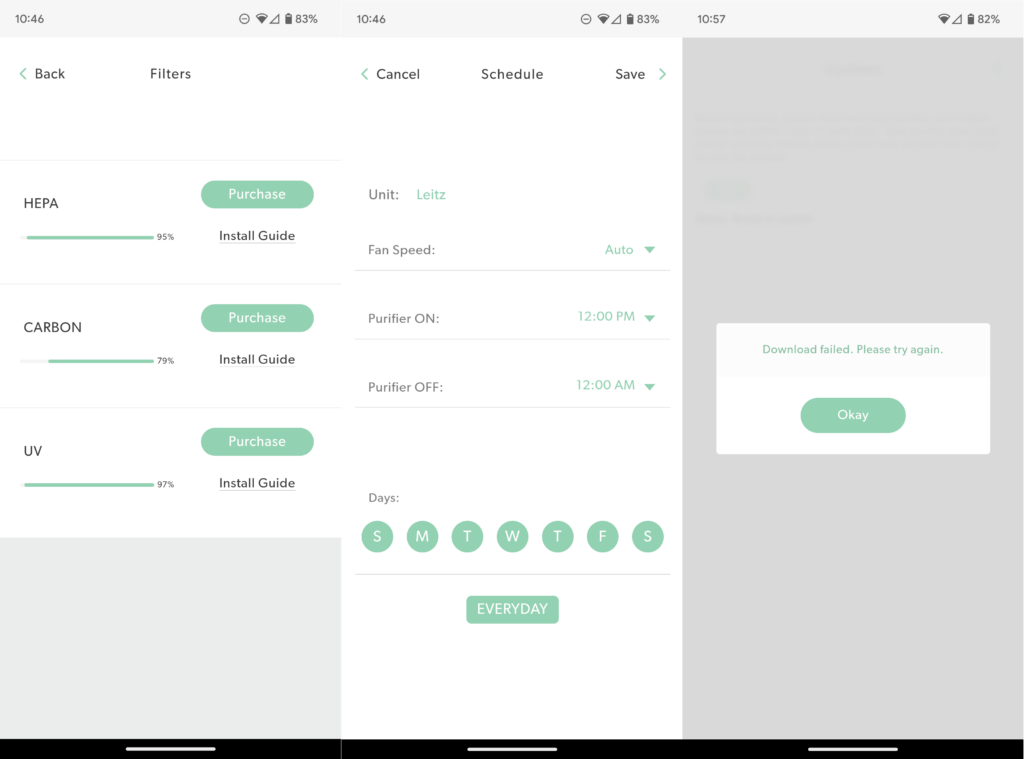
Fortunately, things are much better elsewhere. The Leitz TruSens Z-3500H is slightly unusual among air purifiers in that it creates a slight breeze, rather than a more diffuse movement of air. Some cleaned air exits straight up from behind the control bar, while the remainder emerges, angled forward slightly, from the grilles in front. That said, it’s not enough to double up as an effective fan on a hot day. I measured up to 3.6 metres per second (m/s) from just 15cm away, but from a metre away my anemometer could only detect any airflow on the Turbo setting.
This is a quiet air purifier at its lowest speeds. From 15cm away I measured the sound at 30.5dB on the lowest, Whisper setting. This rose to 41dB on speed 1. Things started to get much noisier at speed 3, reaching 62dB, and 72dB in Turbo mode. From a metre away, sound ranged from a whisper-quiet 25dB up to 54dB on Turbo.
Leitz has fitted the Z-3500H with a DC motor, which helps to explain its comparatively modest power use. It consumed just 8.3 Watts in Whisper mode, rising to only 24W on speed 3. Turbo mode was comparatively power-hungry, though, demanding 58W. I took all of these measurements with the UV lamp on – turning it off reduced power consumption by about 5W. The remote sensor uses a separate mains connection, but its power consumption was below the 1W minimum of my meter.
In practice, you’ll probably leave this purifier in Auto mode, where it automatically adjusts its speed to match the air quality. That means it’s likely to spend much of its time ticking over in one of its lowest two speeds, except when you’re cooking or cleaning. While testing it I managed to burn toast, which sent the particulate counts rocketing and prodded the fan speed up by a couple of levels. Even when I was cooking food more carefully, the Z-3500H would sniff it out and speed up slightly.
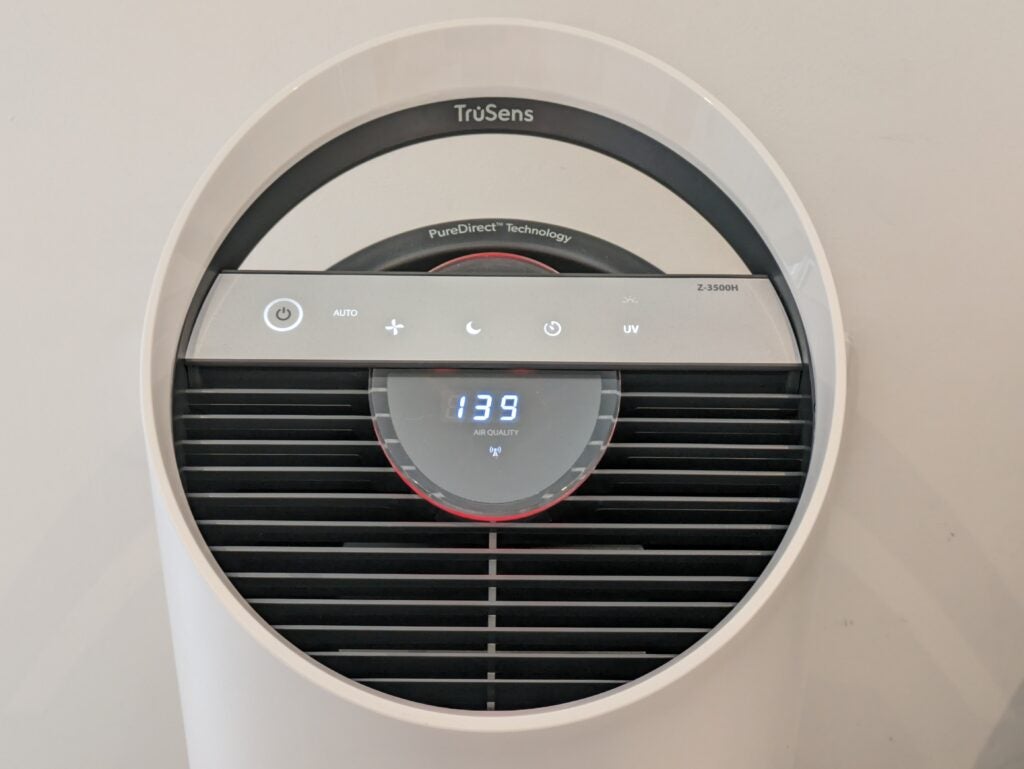
This air purifier excelled in my challenging smoke test. Shut in a small room with a burning smoke pellet, it stepped itself up to Turbo mode within seconds. After three minutes it had lowered the room’s PM2.5 count from our meter’s maximum 999 down to a (still dangerous) 594. Within six minutes, this reading had dropped into the moderate range – that’s about twice as fast as the Levoit Core 300S managed to clean up in the same test. In just another minute air quality fell below 50, rated ‘good’, and the fan speed began to reduce automatically.
Latest deals
Should you buy it?
You want excellent performance: This air purifier reacts quickly to deteriorating air quality and performs strongly across the board
You want better smart features: The app and connectivity here are disappointing.
Final Thoughts
This is a well-designed air purifier suitable for fairly large family rooms. Provided you don’t place the Z-3500H and its sensor too far apart, you can set and forget it while it works away to keep the air fresh. Its UV lamp provides a welcome extra defence against airborne illnesses, too.
At this price, though, it’s quite a shame that it couldn’t maintain a stable Wi-Fi connection and that its app is a little basic. The Dyson Purifier Hot+Cool Formaldehyde has more features and a much better app, but it’s also significantly more expensive.
How we test
Unlike other sites, we test every air purifier we review thoroughly over an extended period of time. We use industry standard tests to compare features properly. We’ll always tell you what we find. We never, ever, accept money to review a product.
Find out more about how we test in our ethics policy.
Used as our main air purifier for the review period
We test smart purifiers with their apps and we test Amazon Alexa and Google Assistant compatibility.
We time how long it takes each purifier to remove smoke from a closed room.
FAQs
Leitz says the anticipated life of the HEPA filter is 12-15 months, but the carbon filter only lasts around 3-4 months. The UV lamp is replaceable, too, but it should last 1-3 years. Like all air purifiers, using a filter for too long will lead to reduced performance. You can prolong a filter’s effective life by removing it and vacuuming house dust from the outer surface every month. The Z-3500H’s outer pre-filter layer can be rinsed under the tap to help restore its performance.
Air purifiers are essentially a fan with a filter, so we’d expect a simple model to last for several years of regular use.
Air purifiers do reduce the levels of pollutants and allergens in the air. They also filter out mould spores, pollen, bacteria, and some viruses. There’s anecdotal evidence to suggest they can help with allergies, and by reducing particulates in the air they may help reduce the lung and circulatory damage associated with some known pollutants.








